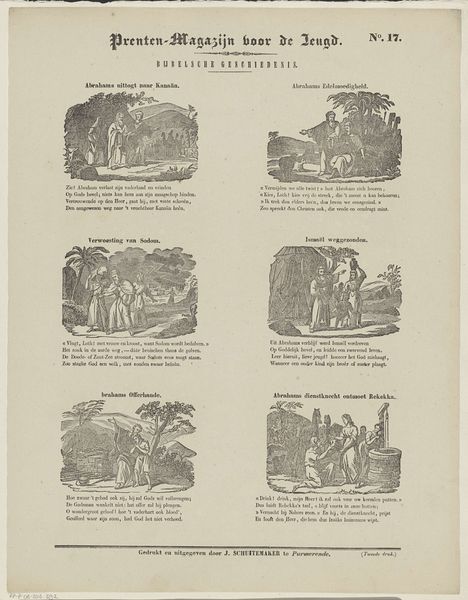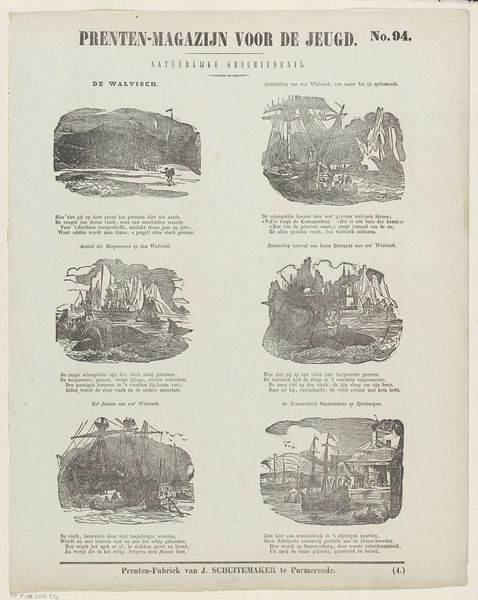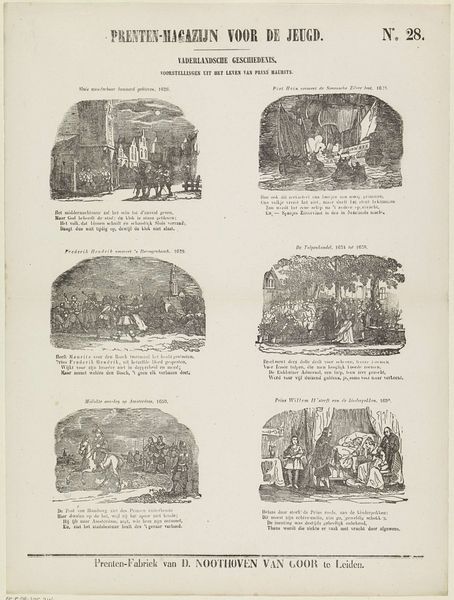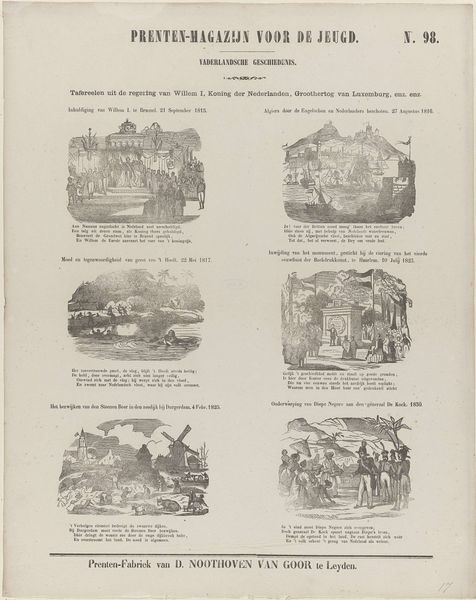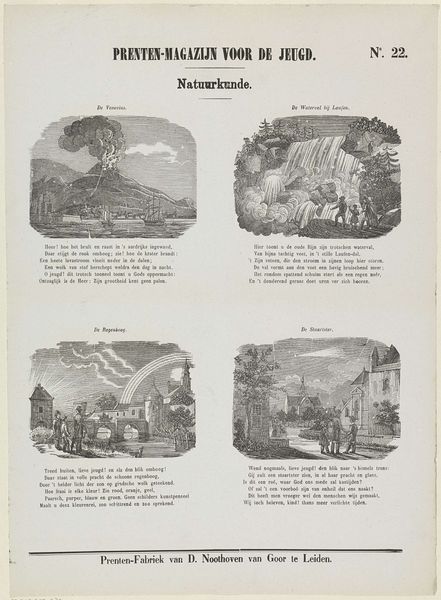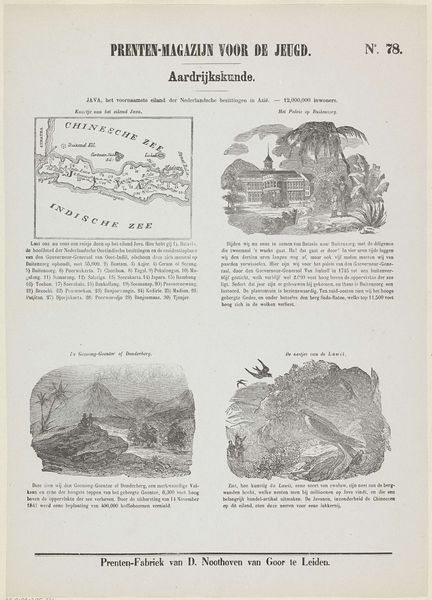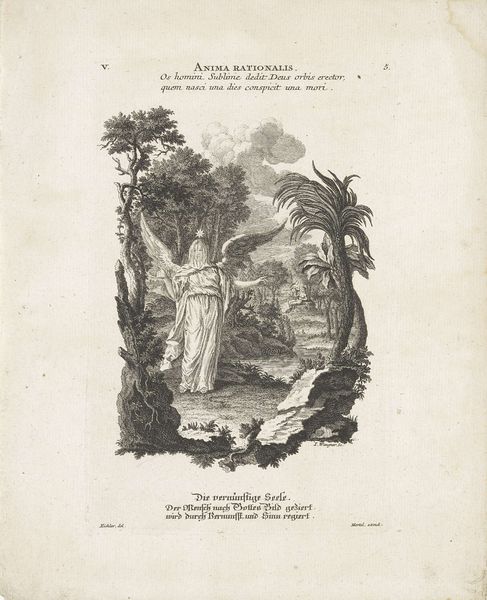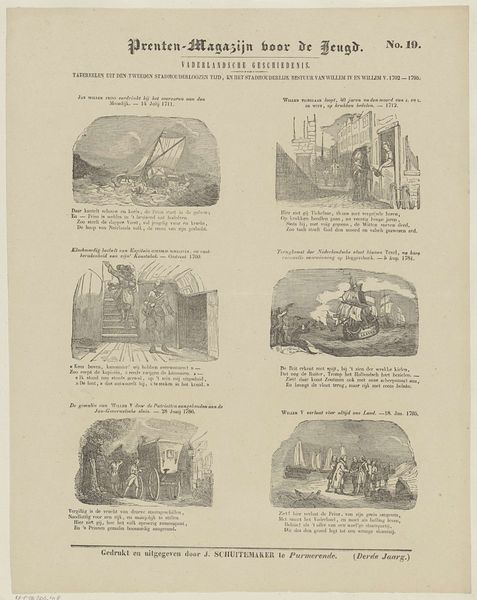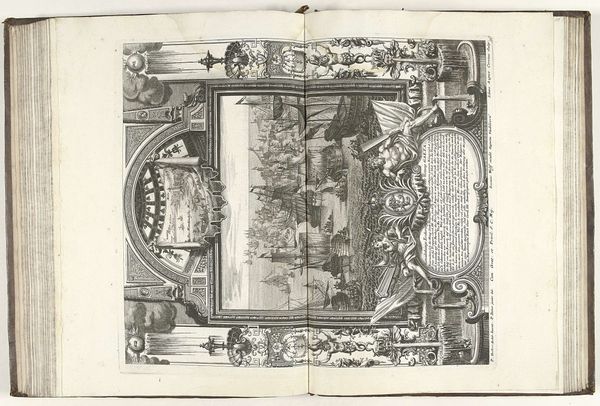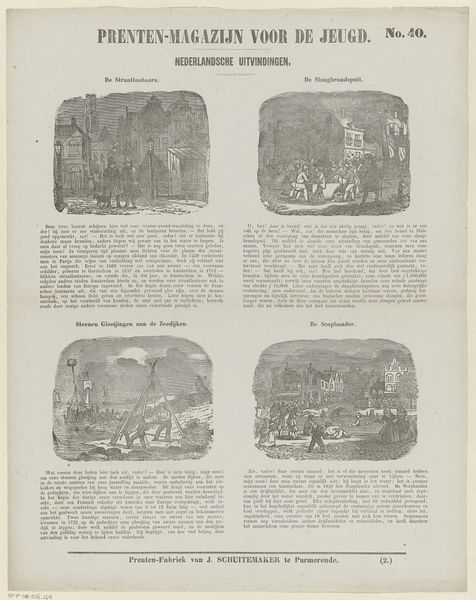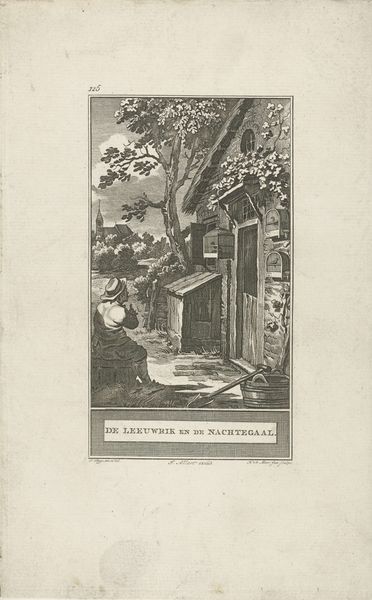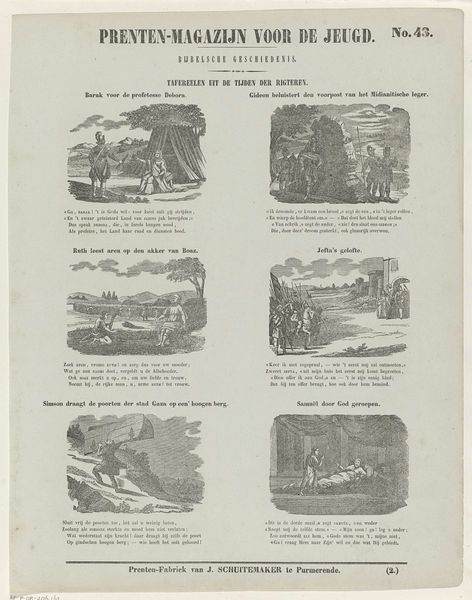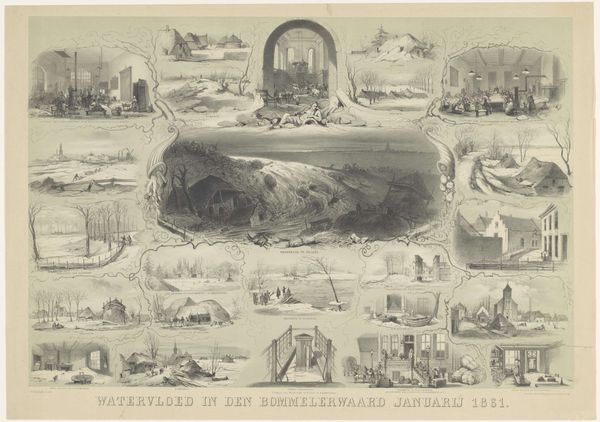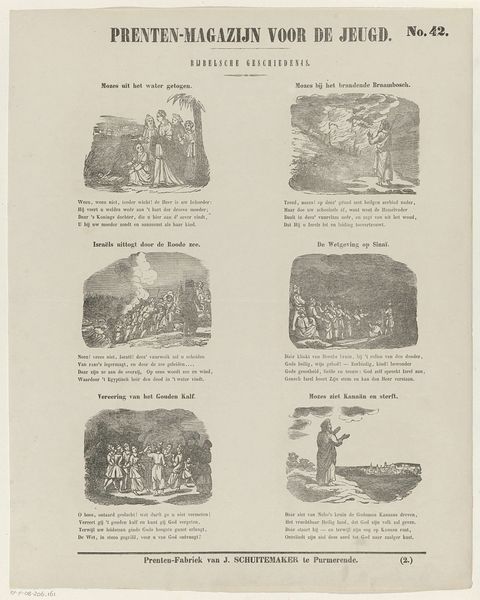
Tijdschrift L'Illustration Nationale, ter gelegenheid van het vijftigjarig jubileum van de Belgische onafhankelijkheid, 1880 1880
0:00
0:00
graphic-art, print, engraving
#
graphic-art
#
art-nouveau
#
16_19th-century
# print
#
old engraving style
#
cityscape
#
history-painting
#
engraving
#
realism
Dimensions: height 395 mm, width 276 mm
Copyright: Rijks Museum: Open Domain
Curator: This engraving, titled "Tijdschrift L'Illustration Nationale, ter gelegenheid van het vijftigjarig jubileum van de Belgische onafhankelijkheid, 1880," was created in 1880 for a special issue of the illustrated magazine. Editor: It's dense, almost overwhelmingly so! A visual feast of tiny details, with the urban landscapes blending with natural motifs. The old engraving style evokes a very particular kind of nineteenth-century mood... serious, celebratory, and perhaps a bit… stuffy. Curator: The "old engraving style," as you put it, reflects the meticulous process of printmaking popular at the time, reliant on highly skilled engravers. Look closely; each line had to be carefully etched into the printing plate. Consider the immense labor involved. The materials used, the paper, the ink, would all have been specifically chosen. Editor: Indeed, but the image also signifies something of that era. Observe how industrialization juxtaposes images of idyllic scenery in the cityscape panels. And each cityscape seems to be proudly 'branded' with the Belgian heraldic lion! We can see how this celebratory image for mass consumption functioned as state propaganda at the time, reinforcing a sense of national identity and progress. What do you think about how industrialization and nature come together here? Curator: Well, from my perspective, this is less a vision of harmony and more an attempt to reframe the disruption of industry. The artist or publisher wanted to showcase industrial development, linking progress to their anniversary and political agenda. This engraving was destined to circulate widely. The very nature of the printing process and its materials implies an appeal to the everyday citizen. The publishers sought profit by positioning themselves as essential providers of information and patriotic feeling. Editor: I see what you mean. We are examining art's engagement in society as it celebrates the constructed mythology of nationalism, intertwined as it is with social development and technological advancement. How images of nationhood become tools themselves. Curator: Precisely. These publications depended heavily on commercial advertising too, so one should never separate material output from the historical economics involved. Editor: Considering this, I find it truly intriguing to realize the many narrative threads intricately woven in a seemingly straightforward commemorative piece. Curator: It underscores the value of interrogating even seemingly simple images for a more complete picture.
Comments
No comments
Be the first to comment and join the conversation on the ultimate creative platform.
